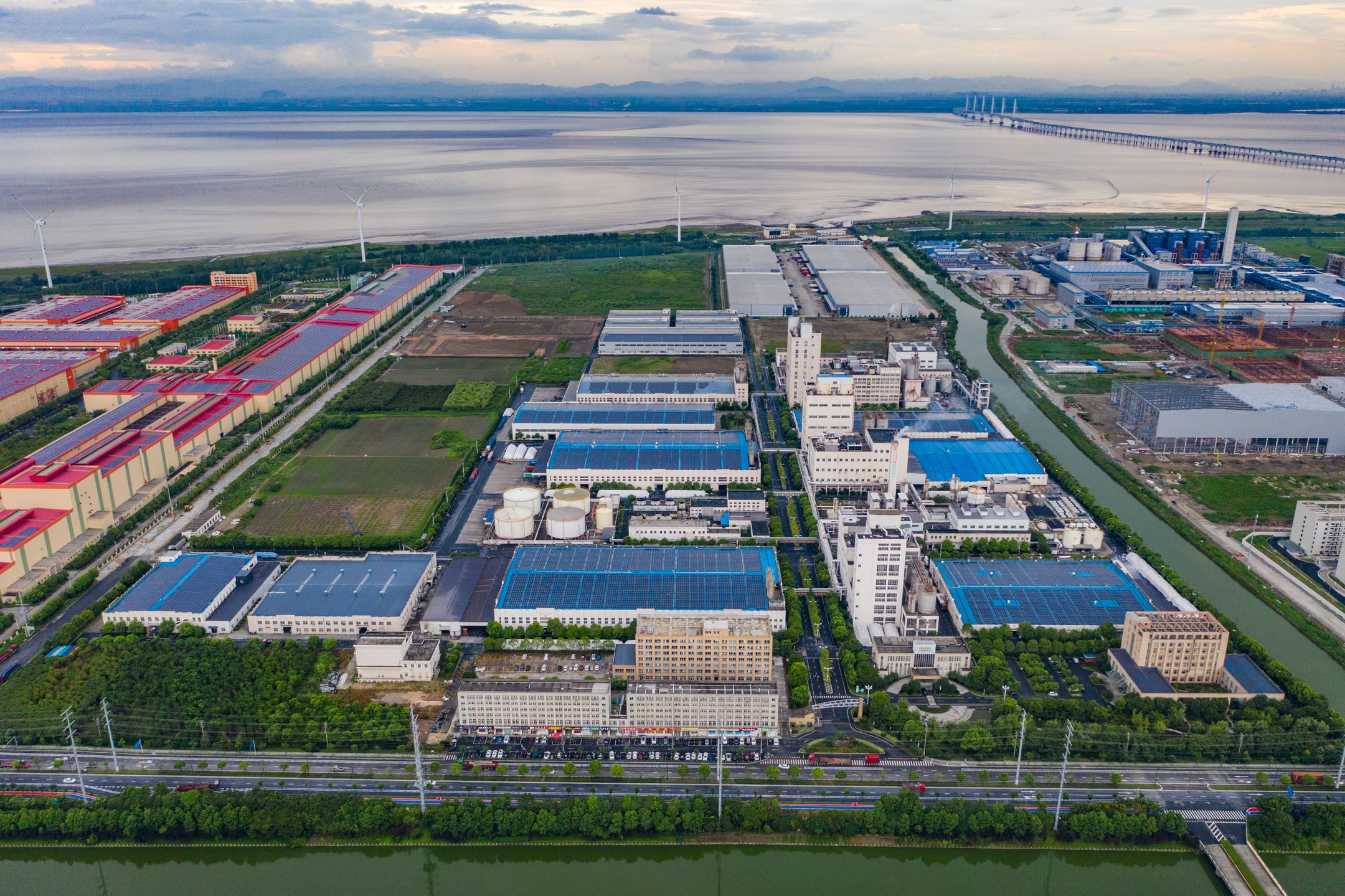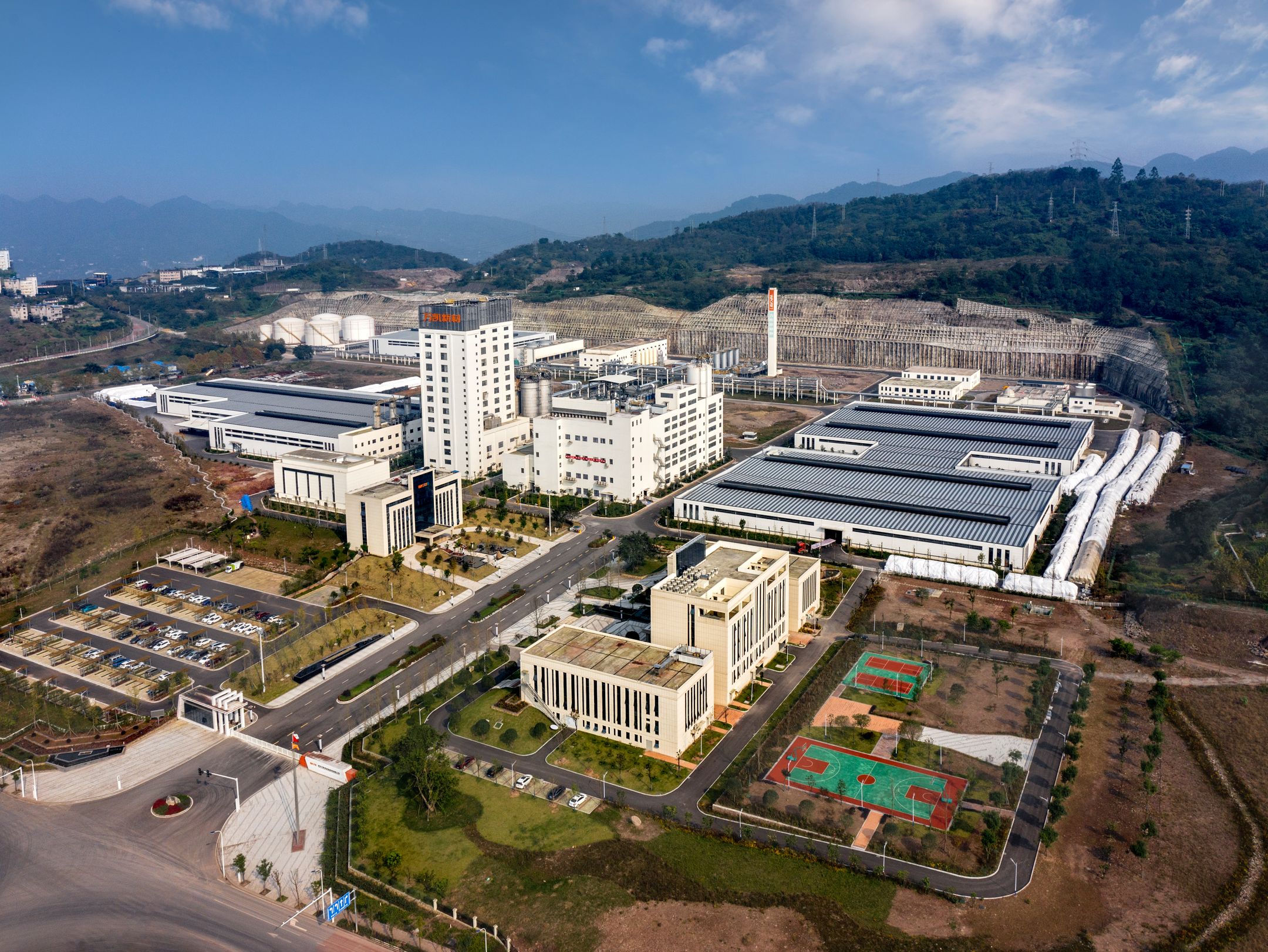
Annual Report on Energy Saving and Emission Reduction for Wankai New Materials Co., Ltd
Wankai, a polyester chips producer with an annual capacity of 3 million tons bottle-grade PET (polyethylene terephthalate), has integrated energy saving and emission reduction into its core strategy. Our commitment to green production is demonstrated by the significant improvements in energy efficiency and carbon emissions reduction at our facilities in Haining and Chongqing. These advancements are instrumental in our journey towards sustainable development.
1.Haining Plant Overview
The Haining plant, located in the Yangtze River Delta Economic Zone, has an annual capacity of 1.2 million tons. It focuses on green production and low-carbon energy, utilizing renewable energy sources and optimizing production processes to decrease emissions and enhance energy efficiency. In 2022, the total production in 2022 is 1,115,000 tons, with 312,400 tons of carbon emissions, achieving a rate of 0.280 tCO2/t.
1.1 Renewable Energy Utilization
The Haining plant's commitment to sustainability is further exemplified by its renewable energy initiatives. The plant harnesses solar power, utilizes waste heat for power generation, and produces biogas, which together accounted for a total renewable energy generation of approximately 14,386.878 MWH in 2022. This effort resulted in a reduction of approximately 8,204.837 tons of CO2 emissions.
Wankai has taken significant steps towards renewable energy production since 2014 with the initiation of a photovoltaic power generation project. This was followed by the implementation of esterification waste heat power generation in 2018 and biogas power generation in 2019. The data from these projects over the past three years are as follows:
| Renewable energy generation | Projects | 2020 | 2021 | 2022 |
| Photovoltaic power generation(MWH) | 8107.740 | 8355.81 | 12424.05 | |
| Esterification of waste heat for power generation(MWH) | 6738.830 | 3597.334 | 1904.94 | |
| Biogas power generation(MWH) | 228.373 | 164.785 | 57.888 | |
| Total output of electricity(MWH) | 15074.942 | 12117.929 | 14386.878 | |
| Reduction in carbon emissions(t) | 8597.239 | 6910.854 | 8204.836 | |
| Total electricity consumption(MWH) | 146023.083 | 141387.154 | 164896.719 |
1.2 Energy-saving Process Improvement
Haining plant is also committed to improving energy efficiency by implementing energy-saving technology transformations for major equipment in the production process while ensuring product quality. This has resulted in a total electricity savings of 2,942.4 MWH, 6,277.12 tons of standard coal, and a reduction in CO2 emissions by approximately 18,942.74 tons. The projects and detailed data are shown below:
| Energy conservation technical modification | Projects | Annual saving of power(MWH) | Annual saving of standard coal (t) | Annual emission reduction(t) |
| Electric turbine modified to water turbine | 394.2 | 224.81 | ||
| Process optimization of heating media stations | 2537.28 | 7034.61 | ||
| Centralized gas supply project | 1460 | 832.64 | ||
| Energy saving project of the first esterification reaction kettle | 216.11 | 599.16 | ||
| Ultra-low-emission energy-saving conservation of the bolier | 1088.2 | 3473.73 | 10251.52 | |
| Total | 2942.4 | 6227.12 | 18942.74 |
2.Chongqing Plant Overview
The Chongqing plant is strategically positioned at the intersection of the Belt and Road and the Yangtze River Economic Belt. With an annual production capacity of 1.8 million tons, the plant is committed to achieving carbon neutrality, energy conservation, and waste reduction. To accomplish these goals, the plant is undertaking energy-saving technology upgrades and focusing on a dual-track emission reduction system. In 2022, the plant's operations yielded 1.2649 million tons of output, resulting in 248,300 tons of CO2 emissions and a CO2 intensity of 0.196 tCO2/t of production.
2.1 Renewable energy utilization
To enhance renewable energy usage, Wankai has installed photovoltaic systems on the plant's rooftops and implemented waste heat power generation, annually generating approximately 56,428 MWH of electricity. This has led to a reduction in annual emissions by about 32,200 tons.
| Renewable energy generation | Projects | Annual power generation | Annual emission reduction(t) | Remark |
| Photovoltaic power generation | 5500 | 3136.65 | Rooftop distributed PV with a capacity of 7.4MWP, opreational since August 2023 | |
| Esterification of waste heat for power generation | 15278.58 | 8713.37 |
2.2 Technical modifications
Chongqing Wankai has proactively explored energy-saving technologies, achieving a reduction in CO2 emissions of approximately 36,800 tons. This has been accomplished through the implementation of low-nitrogen burner technology and the collection and conversion of tail gas condensates.
| Energy conservation technical modification | Projects | Annual saving of natural gas(10000m3) | Annual emission reduction(t) |
| Low NOx combustor technical modifications | 97.4 | 2105.97 | |
| Surplus steam technical modifications | 120.96 | 2615.39 | |
| Total | 2333.08 | 8964.33 |
Due to the Chongqing base's recent commencement of operations, the equipment is relatively advanced, and natural gas serves as the primary fossil energy source. Consequently, there have been few technical transformation projects and carbon reduction initiatives. Nevertheless, the company remains steadfast in its commitment to the principles of energy conservation, carbon reduction, and green development.
3. Summary
Wankai is continuously seeking energy-saving opportunities throughout the production process and is dedicated to optimizing technology, embracing renewable energy, and improving resource efficiency. These efforts underscore our unwavering pursuit of high standards and sustainable practices, ensuring production growth aligns with eco-friendly processes. We are focused on achieving continuous energy conservation and emission reduction, moving towards a more sustainable and greener future.


